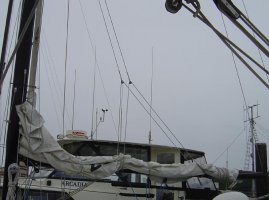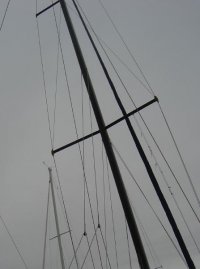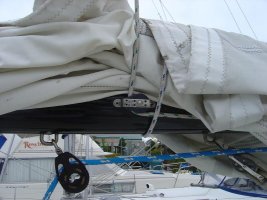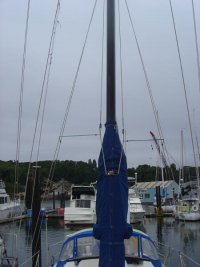Stack Pack ruminations
Thanks Seth.
I just looked through the install instructions at the Doyle site, and I cannot see how my two reef lines would integrate into their setup.
I long ago took off the factory track on the side of the boom and have the reef lines going up through the reef-eye/grommet and back down and under the boom and then into a bowline around the part that goes to the sheave on the end casting of the boom. Our prior boat did have boom slugs and we had slots in the shelf foot for each reef line. No need for such slots with the present loose-foot main. :nerd:
I have occasionally crewed on an E-33 for the last decade with EZ-Jax (r) and have to say that they work *very* well. Best of all they retract to the sides of the mast when not needed.
On a minor note, the Doyle instructions mention leading the halyard to a point on the stack pack itself-- we have a rod vang and always lead it to the end of the boom and sock it up hard when at the dock to control boom movement.
Cheers,
Loren
Thanks Seth.
I just looked through the install instructions at the Doyle site, and I cannot see how my two reef lines would integrate into their setup.
I long ago took off the factory track on the side of the boom and have the reef lines going up through the reef-eye/grommet and back down and under the boom and then into a bowline around the part that goes to the sheave on the end casting of the boom. Our prior boat did have boom slugs and we had slots in the shelf foot for each reef line. No need for such slots with the present loose-foot main. :nerd:
I have occasionally crewed on an E-33 for the last decade with EZ-Jax (r) and have to say that they work *very* well. Best of all they retract to the sides of the mast when not needed.
On a minor note, the Doyle instructions mention leading the halyard to a point on the stack pack itself-- we have a rod vang and always lead it to the end of the boom and sock it up hard when at the dock to control boom movement.
Cheers,
Loren






